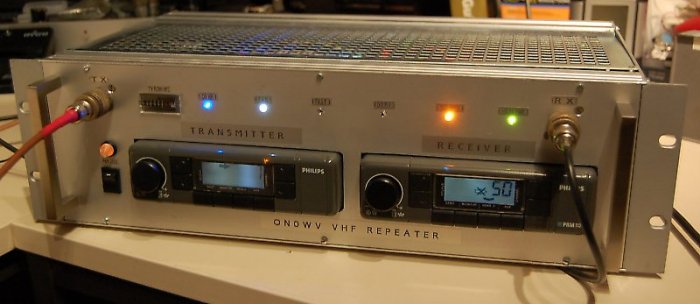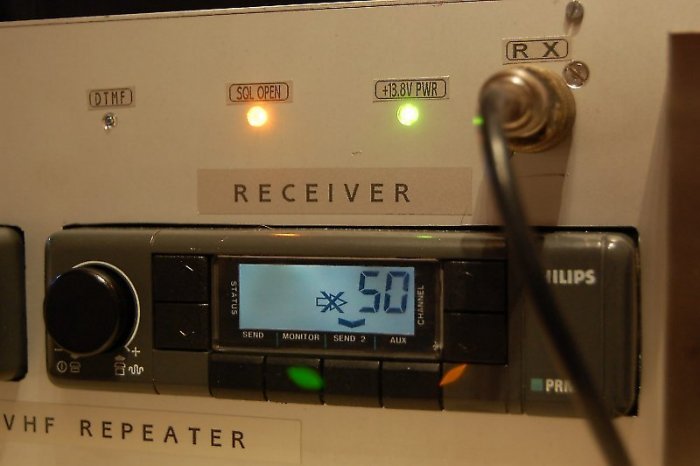As SYSOP of our local repeater (see https://www.on0wv.be/ ) which is located on our historical BRUGES Belfry, I assembled a repeater based on 2x PRM8020 VHF types.
These radio sets are excellent building blocks for a repeater project, as they are of professional grade, offering exemplary characteristics, and a complete I/O interface via a DB15 connector on the back. Furthermore, they are capable of up to 25w 'clean' power output (continuous if cooled by a small fan), CTCSS Squelch and output coding, etc.
The PRM8020 comes in 2 versions : a 20/25kHz frequency raster and a 12,5 kHz raster. For this project, I used as receiver a 12,5 kHz version and for transmitter a 20 kHz type. Despite the narrow band receiver with razor-blade edges on adjacent channels, the 'wide band' deviation of incoming stations is not distorted at all, on condition that these are right on frequency.
For use as building block of a repeater, the PRM8020 offers the BIG advantage of it's receiver immunity to strong signals : where with a standard receiver, 90 or 95 dB isolation between TX/RX is a must, the PRM8020 RX/TX combination is happy with about 70 to 75 dB before any traces of desensing appear. In fact desensing starts at a level of -30dBm about (@ 600 kHz shift). So this combination will work perfectly even with cavities offering only moderate performances.
As the PR8020 has a built-in SQL circuit which opens at about 0,25µV (with hysterisis down to 0,13µV about), I decided to add an external SQL with dual level action. See schematic of circuit developed by Joe K7JEM - which reproduces the MOTOROLA 'Micor' Squelch. Low level signals (or mobiles in the flutter) produce a longer SQL 'tail', therefore the SQL action is more 'forgiving'... while strong signals (> 1µV, with 20dB S/N ratio or more) produce immediate SQL action. This SQL can be easily preset to 0,2 µV or lower. I however found that the DISC output on the DB15 is somewhat subject to temperature variations: the lower the °t, the smaller the signal level becomes, thus the more sensitive the SQL will open (eventually: risk of opening without signal). So, if the repeater is exposed to varying temperatures, the DISC OUT signal must be temperature compensated by a NTC resistor circuit.

The repeater integrated in a 3HU 19'' rack cabinet
The repeater has following main features :
-
Dual level , adaptative SQL circuit (set to 0,20 µV / 1,0 µV)
-
Intelligent fan control circuit (fan only runs when transmitter has been keyed for 30 seconds, and then runs up to 2 minutes after last transmission).
-
Alarm & protection circuit if fan fails : when no RPM is detected, the transmitter goes off air.
-
Dual uplink frequencies for DTMF remote control , allowing control through 'secure channel'
-
Oversized power supply 13,8v / 18A built in
-
COR / 1750 / CTCSS remote selectable by DTMF

The Receiver, with DTMF / SQL / PWR status LEDs.

Fan control board & power distribution PCB
More info on PRM8020
Feel free to contact me for more info on (re)programming PRM8020, service handbook etc.
|
|